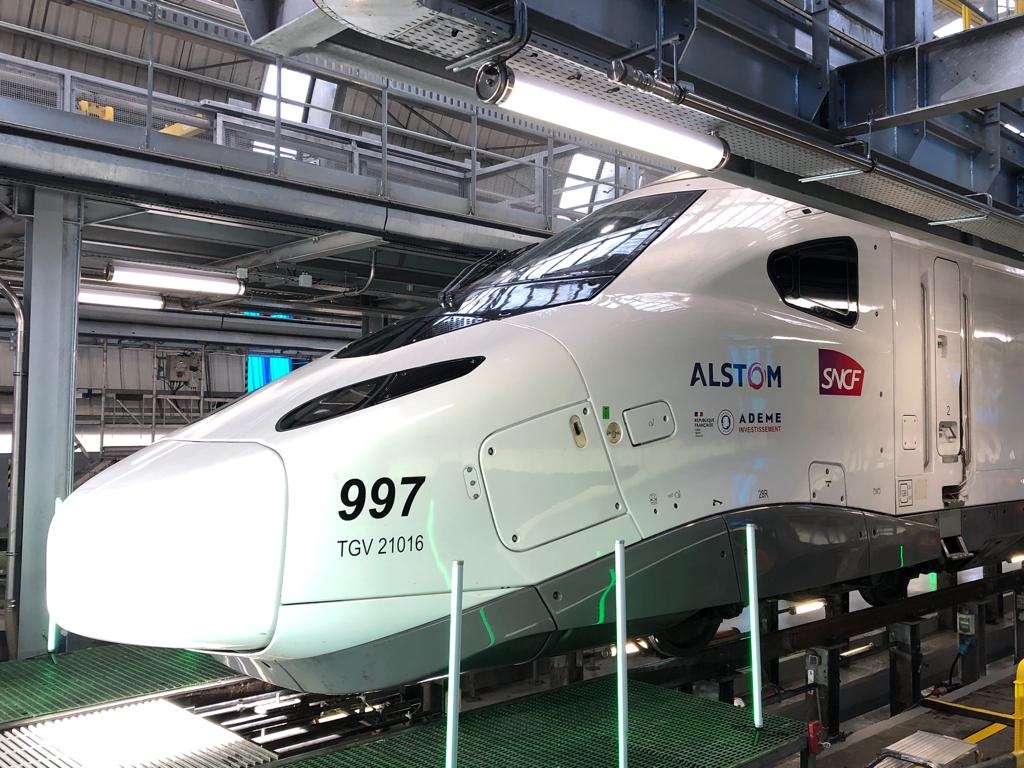 The TGV M high-speed train (the future INOUI TGV) entered a new phase of testing on the French national railway network with Alstom delivering the second train tested until the end of 2023, before the acceptance test phase in 2024.
The TGV M high-speed train (the future INOUI TGV) entered a new phase of testing on the French national railway network with Alstom delivering the second train tested until the end of 2023, before the acceptance test phase in 2024.
In December 2022, pre-validation tests began at the Velim site, in the Czech Republic, with the aim to validate for the first time the train’s overall operation at speeds of up to 200 km/h.
In March 2023, the future INOUI high-speed train travelled to Vienna for climatic tests which enabled the future train to be tested at extreme temperatures (between -20°C and +40°C). They are critical in the current climate change context, as they will enable us to assess the energy efficiency of the future INOUI TGV. The train’s resistance to climatic constraints will make an active contribution to the objective of reducing the energy consumption of the future INOUI TGV by 20%.
Since June 2023, pre-validation tests have moved to the French national railway network and will be carried out until December 2023. They consist of testing and, if necessary, adjusting the train’s operation, with trains travelling at speeds of up to 320 km/h.
The two trains delivered by Alstom are used to enable the shunting, energy collection through pantograph, traction, and braking functions to be assessed and validated. It is this train that ran for the first time at the maximum commercial speed of 320km/h, on 14 September 2023 at 3.47pm. In October 2023, the pre-validation tests will accelerate with the first runs of a second train. This will enable all the train’s safety equipment to be validated.
This new test train is covered with two special liveries (at each end of the train), designed by SNCF Voyageurs and Alstom staff respectively, and will be visible on the Sud Europe Atlantique high-speed line until mid-November.
From January to July 2024, admission tests will be carried out, which consist of testing the operation of the trainset by reproducing the configurations and contexts that it may encounter throughout the real life of the train. They will be conducted by an accredited body on the French national railway network, with traffic running at up to 320 km/h. The admission tests will be used to receive the Marketing Authorisation issued by the European Railways Agency (ERA).
From autumn 2024, over an extended period prior to the start of commercial service, several trainsets will run throughout the network as part of pre-operation tests. These will assess the train’s reliability under operating conditions. All functions will be tested, in particular those relating to passenger comfort. These tests, which will be conducted with the first 4 production trains, will also be an opportunity for drivers and conductors to familiarise themselves with this new train and its innovations.
At the end of all these tests, the future INOUI TGV will have benefited from 350 weeks of cumulative testing and will have covered more than 1 million kilometres before the first customer experiences the SNCF Voyageurs high-speed train.
SNCF Voyageurs ordered 115 trainsets of Avelia Horizon range worth EUR 3.5 billion and represents the 5th generation of TGVs and the realisation of a historic industrial and innovation project between the tow companies. It will be rolled out over ten years, starting in 2025, with the first trains running on the Paris – Lyon – Marseille line.
Due to new technologies installed, the TGV M high-speed train promises to usher in a new era in TGV maintenance. It will be a communicating trainset that will provide permanent remote access to technical data and clear information on the state of each of its components. This will make it possible to plan maintenance operations based on the actual condition of the components, and to anticipate breakdowns in doors, air conditioning and, more generally, all the systems that contribute to train operation and passenger comfort.
Share on:






